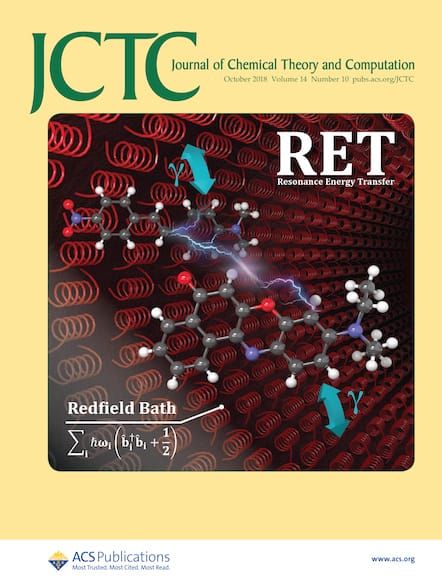可编程螺旋波动力学:反应扩散系统中由时间调制驱动的不稳定级联。
IF 5.5
1区 化学
Q2 CHEMISTRY, PHYSICAL
引用次数: 0
摘要
螺旋波是标志性的结构,是化学和生物系统中自组织的显著标志。虽然它们在空间非均匀性下的不稳定性已经得到了广泛的研究,但螺旋对时间调制的响应,特别是在图灵阈值附近,远离Hopf分岔,仍然没有得到充分的研究。在这项研究中,我们揭示了二氧化氯-碘-丙二酸模型中动力学参数的周期性强迫如何在空间稳定但时间不稳定的状态下解锁螺旋波不稳定性的多样化和可调景观。从一个强大的单臂螺旋开始,我们观察到一系列调制诱导的现象:呼吸螺旋、核心漂移、螺旋破裂和湍流,以及向振荡簇、伊辛阵样模式和空间均匀体振荡的过渡。值得注意的是,我们发现螺旋再生具有臂宽改变和手性反转,以及不对称螺旋和由幅相相互作用产生的多相簇态。我们的发现被系统地映射到二维相图上,揭示了共振驱动的分岔级联。我们的研究结果阐明了简单的时间输入如何在非线性介质中引导复杂的模式选择,为系统化学、化学波控制和响应性自组织系统的设计提供了概念上的进步。本文章由计算机程序翻译,如有差异,请以英文原文为准。
Programmable Spiral Wave Dynamics: Instability Cascades Driven by Temporal Modulation in a Reaction-Diffusion System.
Spiral waves are iconic structures and are striking hallmarks of self-organization in chemical and biological systems. While their instabilities under spatial inhomogeneities have been widely studied, the response of spirals to temporal modulations particularly near the Turing threshold yet away from Hopf bifurcation, remains underexplored. In this study, we reveal how periodic forcing of a kinetic parameter in the Chlorine Dioxide-Iodine-Malonic Acid model unlocks a diverse and tunable landscape of spiral wave instabilities in a regime that is spatially stable yet temporally unstable. Starting from a robust single-arm spiral, we observe a cascade of modulation-induced phenomena: breathing spirals, core drift, spiral breakup and turbulence, as well as transitions to oscillating clusters, Ising-front-like patterns, and spatially uniform bulk oscillations. Remarkably, we identify spiral regeneration with altered arm width and chirality reversal, along with asymmetric spirals and multiphase cluster states arising from amplitude-phase interactions. Our findings are systematically mapped onto a two-dimensional phase diagram, revealing resonance-driven bifurcation cascades. Our results illuminate how simple temporal inputs can steer complex pattern selection in nonlinear media, offering conceptual advances for systems chemistry, chemical wave control, and the design of responsive self-organizing systems.
求助全文
通过发布文献求助,成功后即可免费获取论文全文。
去求助
来源期刊

Journal of Chemical Theory and Computation
化学-物理:原子、分子和化学物理
CiteScore
9.90
自引率
16.40%
发文量
568
审稿时长
1 months
期刊介绍:
The Journal of Chemical Theory and Computation invites new and original contributions with the understanding that, if accepted, they will not be published elsewhere. Papers reporting new theories, methodology, and/or important applications in quantum electronic structure, molecular dynamics, and statistical mechanics are appropriate for submission to this Journal. Specific topics include advances in or applications of ab initio quantum mechanics, density functional theory, design and properties of new materials, surface science, Monte Carlo simulations, solvation models, QM/MM calculations, biomolecular structure prediction, and molecular dynamics in the broadest sense including gas-phase dynamics, ab initio dynamics, biomolecular dynamics, and protein folding. The Journal does not consider papers that are straightforward applications of known methods including DFT and molecular dynamics. The Journal favors submissions that include advances in theory or methodology with applications to compelling problems.
 求助内容:
求助内容: 应助结果提醒方式:
应助结果提醒方式:


